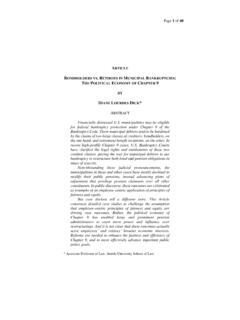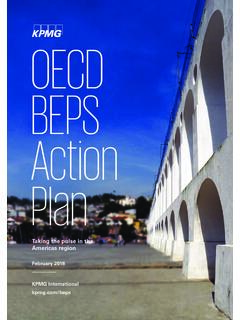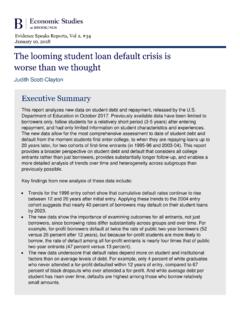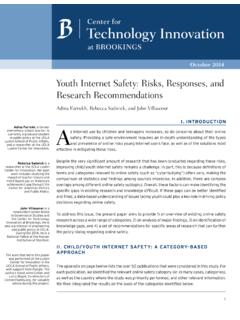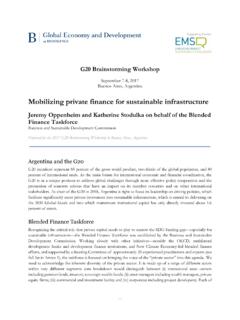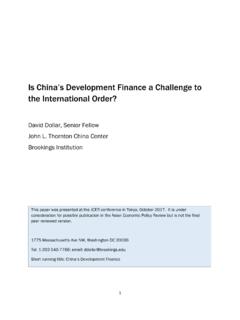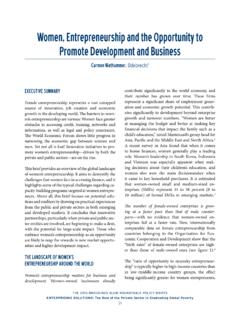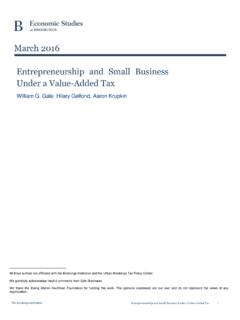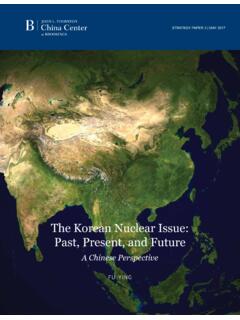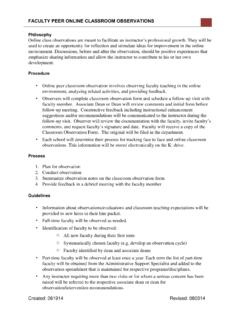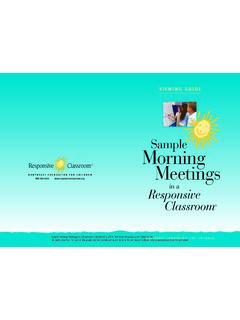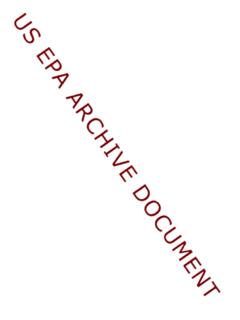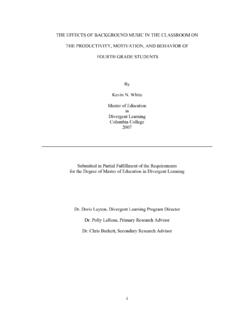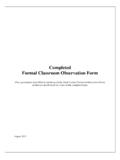Transcription of Evaluating Teachers with Classroom Observations
1 1 Evaluating Teachers with Classroom Observations Lessons Learned in Four DistrictsGrover J. (Russ) Whitehurst, Matthew M. Chingos, andKatharine M. LindquistReutersMay 2014 Evaluating Teachers with Classroom Observations - Lessons Learned in Four Districts 2 Executive Summary The evidence is clear: better Teachers improve student outcomes, ranging from test scores to college attendance rates to career earnings. Federal policy has begun to catch up with these findings in its recent shift from an effort to ensure that all Teachers have traditional credentials to policies intended to incentivize states to evaluate and retain Teachers based on their Classroom performance.
2 But new federal policy can be slow to produce significant change on the ground. The Obama Administration has pushed the creation of a new generation of meaningful teacher evaluation systems at the state level through more than $4 billion in Race to the Top funding to 19 states and No Child Left Behind (NCLB) accountability waivers to 43 states. A majority of states have passed laws requiring the adoption of teacher evaluation systems that incorporate student achievement data, but only a handful had fully implemented new teacher evaluation systems as of the 2012-13 school year. As the majority of states continue to design and implement new evaluation systems, the time is right to ask how existing teacher evaluation systems are performing and in what practical ways they might be improved.
3 This report helps to answer those questions by examining the actual design and performance of new teacher evaluation systems in four urban school districts that are at the forefront of the effort to meaningfully evaluate Teachers . Although the design of teacher evaluation systems varies dramatically across districts, the two largest contributors to Teachers assessment scores are invariably Classroom Observations and test score gains. An early insight from our examination of the district teacher evaluation data is that nearly all the opportunities for improvement to teacher evaluation systems are in the area of Classroom Observations rather than in test score gains.
4 Despite the furor over the assessment of Teachers based on test scores that is often reported by the media, in practice, only a minority of Teachers are subject to evaluation based on the test gains of students. In our analysis, only 22 percent of Teachers were evaluated on test score gains. All Teachers , on the other hand, are evaluated based on Classroom observation . Further, Classroom Observations have the potential of providing formative feedback to Teachers that helps them improve their practice, whereas feedback from state achievement tests is often too delayed and vague to produce improvement in teaching.
5 Improvements are needed in how Classroom Observations are measured if they are to carry the weight they are assigned in teacher evaluation. In particular, we find that the districts we examined do not have processes in place to address the possible biases in observation scores that arise from some Teachers being assigned a more able group of students than other Teachers . Our data confirm that such a bias does exist: Teachers with students with higher incoming achievement Grover J. (Russ) Whitehurst is a senior fellow in Governance Studies and director of the Brown Center on Education Policy at the Brookings Institution.
6 Matthew M. Chingos is a fellow in the Brown Center on Education Policy at the Brookings M. Lindquist is a research analyst in the Brown Center on Education Policy at the Brookings Teachers with Classroom Observations - Lessons Learned in Four Districts 3levels receive Classroom observation scores that are higher on average than those received by Teachers whose incoming students are at lower achievement levels. We should not tolerate a system that makes it hard for a teacher who doesn t have top students to get a top rating. Fortunately, there is a straightforward fix to this problem: adjust teacher observation scores based on student demographics.
7 Our analysis demonstrates that a statistical adjustment of Classroom observation scores for student demographics is successful in producing a pattern of teacher ratings that approaches independence between observation scores and the incoming achievement level of students. Such an adjustment for the makeup of the class is already factored into Teachers value-added scores; it should be factored into Classroom observation scores as make several additional recommendations that will improve the fairness and accuracy of these systems: The reliability of both value-added measures and demographic-adjusted teacher evaluation scores is dependent on sample size, such that these measures will be less reliable and valid when calculated in small districts than in large districts.
8 We recommend that states provide prediction weights based on statewide data for individual districts to use when calculating teacher evaluation scores. Observations conducted by outside observers are more valid than Observations conducted by school administrators. At least one observation of a teacher each year should conducted by a trained observer from outside the teacher s school who does not have substantial prior knowledge of the teacher being observed. The inclusion of a school value-added component in Teachers evaluation scores negatively impacts good Teachers in bad schools and positively impacts bad Teachers in good schools.
9 This measure should be eliminated or reduced to a low weight in teacher evaluation programs. Overall, our analysis leaves us optimistic that new evaluation systems meaningfully assess teacher performance. Despite substantial differences in how individual districts designed their systems, each is performing within a range of reliability and validity that is both consistent with respect to prior research and useful with respect to improving the prediction of teacher performance. with modest modifications, these systems, as well as those yet to be implemented, will better meet their goal of assuring students access to high-quality Teachers with Classroom Observations - Lessons Learned in Four Districts 4 Background The United States is in the middle of a transformation in how teacher quality is characterized and evaluated.
10 Until recently, Teachers were valued institutionally in terms of academic credentials and years of teaching. This approach is still embedded in the vast majority of school districts across the country that utilize the so-called single salary schedule. Under this pay system, a regular Classroom teacher s salary is perfectly predictable given but three pieces of information: the district in which she works, the number of years she has worked there continuously, and whether she has a post-baccalaureate degree. This conception of teacher quality based on credentials and experience is the foundation of the highly qualified teacher provisions in the present version of the federal Elementary and Secondary Education Act (No Child Left Behind, or NCLB), which was enacted by Congress in 2001, and is still the law of the land.
